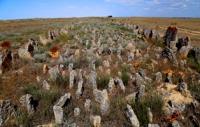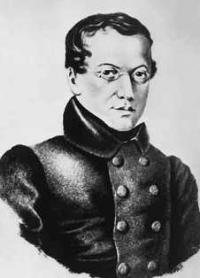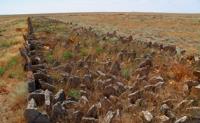You are here
History of fort New-Aleksandrovsky.



History of Mangyshlak.
“In our craft, gentlemen, we need, of course, vigilance and caution, but only caution, which has nothing to do with cowardice, which sees danger everywhere. There is also another cowardice, and often among sailors who are courageous by nature, this is cowardice to the authorities, a fear of responsibility in the event of any misfortune. "Such sailors can sail happily, but they are still not sailors in the true sense of the word, and the battle admiral cannot count on them."
K. Stanyukovich. "Around the world on the" Kite ".
Excursion to ruins of fort New-Aleksandrovsky.
The ruins of Fort Novo-Aleksandrovsky are located on the Western cliff of Ustyurt, on the eastern shore of the Kaidak Bay at an altitude of 165.9 meters above sea level, 13.2 kilometers north-west of the Karakuduk oil field, 28.3 north-west of the railway sidings No. 6 in the Mangistau district of the Mangistay region.
By decree of Peter the Great, in the fall of 1716, Prince Cherkassky left the mouth of the Volga and stuck to the Tub-Koragan tract, on the Mangyshlak peninsula, the most prominent part of the eastern coast of the Caspian to the west. Here he ordered to build a fortress.
The fortress was built, according to Kozhin, in an extremely inconvenient place: there was no land, no forest, no fresh water, only one sand caused by the sea. The ruins of this fortress are located about 30 miles south of the current fort of Alexandrovsky.
Cherkassky again went from Tyub-Koragan by sea, to the southeast, and in early November he docked at the Krasnye Vody tract, where he ordered another fortress to be built, also, according to Kozhin, in a bad place that has neither forest, nor water, nor grass , in a dense bay, where sea water is stagnant and rotten.
Prince Cherkassky set off from Red Waters on December 17 by dry route, through Tyub-Koragan, to Astrakhan, where he arrived on February 20, 1717. His convoy consisted of 100 soldiers and 60 Turkmen people.
The following year, in the spring, Prince Bekovich-Cherkassky went from Astrakhan to Khiva, by dry route, with a detachment of 3,000 people - and he died and ruined the entire detachment with his oversight. Upon receipt of the news of the death of the detachment of Cherkassky, it was ordered the fortress of St. Peter, built on Tyub-Koragan, to keep to the last extreme; but she was soon abandoned. On October 3, 1717, the Krasnovodsk fortress was also abandoned.
Over a hundred years have passed since this first appearance of ours on the eastern coast of the Caspian. Fisheries developed more and more in its northern basin, and more and more attacks of the Kyrgyz and Turkmens on our fishermen, their killing or captivity were observed.
In July 1833 he arrived in Orenburg, military governor, Adjutant General Perovsky. He began his management with a measure that seemed to him one of the decisive, to pacify the Kyrgyz, namely: the construction of a fortification on the eastern shore of the Caspian Sea.
The terrain chosen for fortification was previously inspected by Karelin. In 1834, the same Karelin and Colonel Mansurov went from Guryev across the sea to Dead Kultuk and laid the Novo-Aleksandrovsky fortification in the Kaydak Bay, on the Kiziltash tract.
The purpose of the new fortification was to reconcile and subordinate to our influence the Adaev clan of the Kyrgyz, to destroy the robbery and abduction of people at sea, and to strengthen our trade relations with Asia.
But in the Novoaleksandrovsky fortification, the people of the garrison were dying of scurvy, out of 15 cases - 11, and only 20 of 20 recovered returned to full health. Robberies and the abduction of people did not stop in captivity, in the spring of 1836 even the very keeper of the Embena waters, Odintsov, was taken prisoner from the Caspian Sea.
Finally, it was decided to attack the very nest of all robberies - Khiva. In 1839, the unfortunate expedition of Adjutant General Perovsky took place. Part of the food for the movement to Khiva was supposed to be collected in the Novo-Aleksandrovsky fortification, but the harsh winter caught the ships at sea, and several of them, frozen near the Prorvinsky Islands, were exterminated by the Kirghiz and Turkmens sent by the Khiva khan.
They attacked the post itself, but were repulsed. No matter how sad the end of the expedition was, in the summer of the next 1840 all the Russian prisoners in Khiva, up to 500 people, were released to Russia. Adjutant General Perovsky was replaced by Lieutenant General Obruchev.
He destroyed the Novo-Aleksandrovsky fortification, which was destructive for us and did not reach its destination, in Kaydak, having built in 1846, instead of it, another on the Mangyshlak peninsula, near Cape Tyub-Koragan and a beautiful deep harbor - in a place, although also deserted, but with healthy climate.
Geographic coordinates of the Novo-Aleksandrovsky fort: N44 ° 54'15.52 "E53 ° 48'33.48"
Authority:
"Fort Alexandrovsky: According to the precepts of Peter the Great." “Mangyshlak Peninsula” World Illustration, 1870, No. 83.
Photos
Alexander Petrov.







